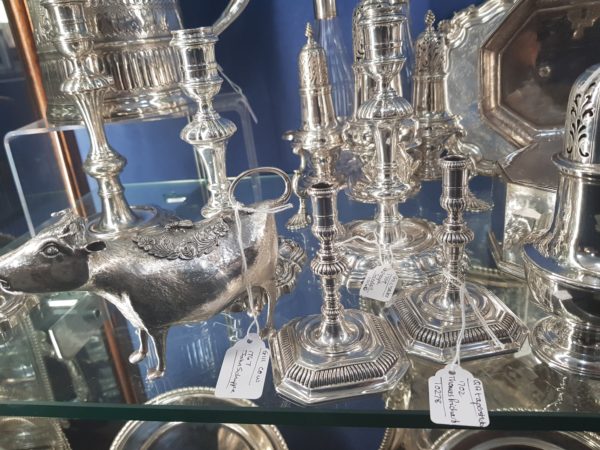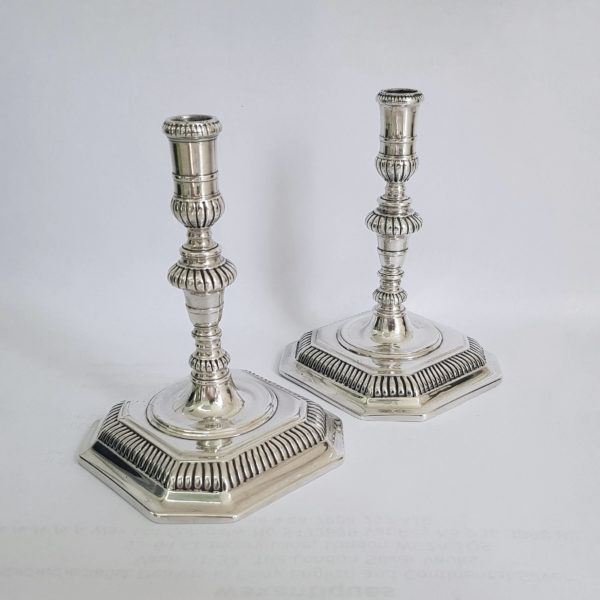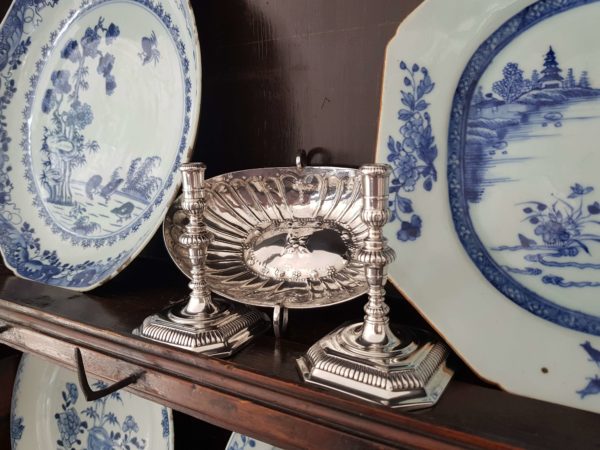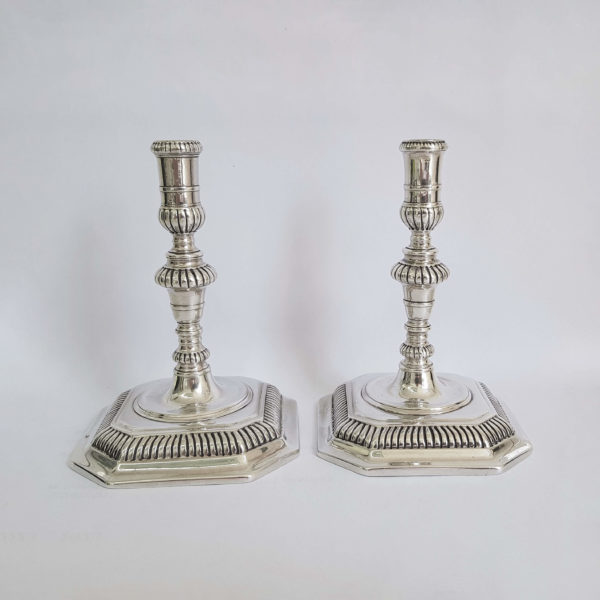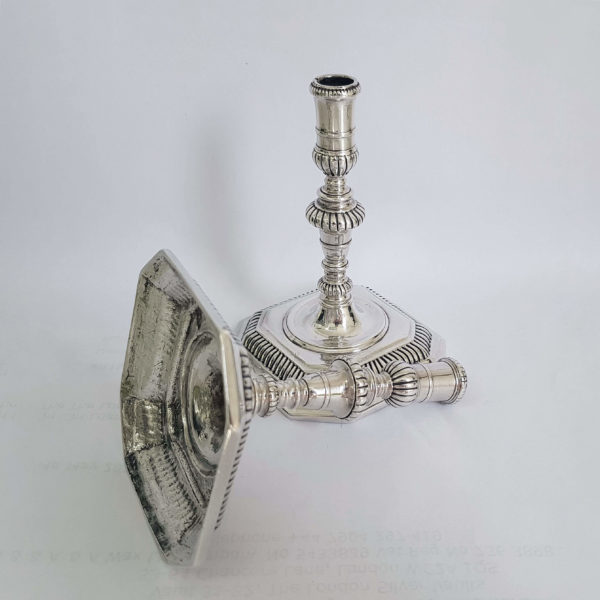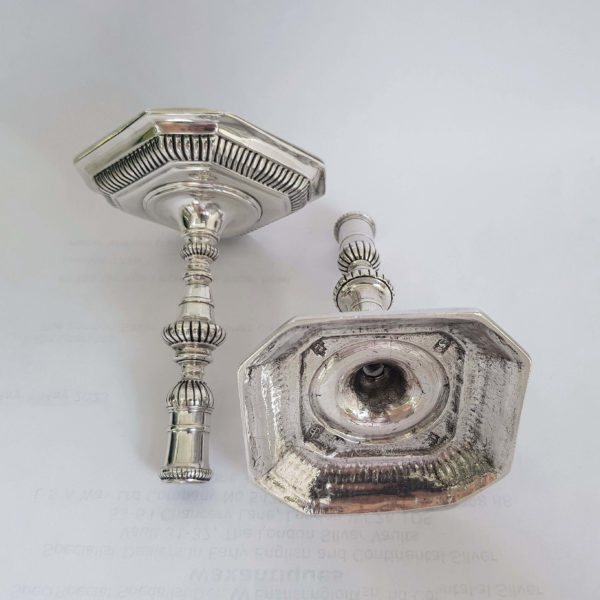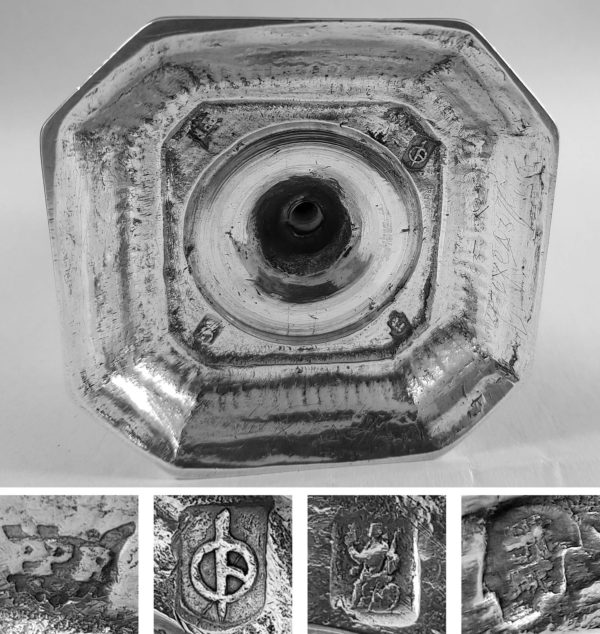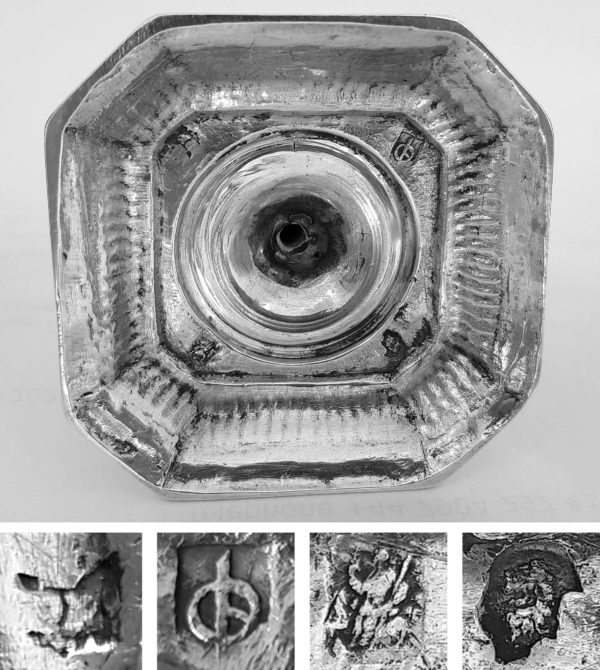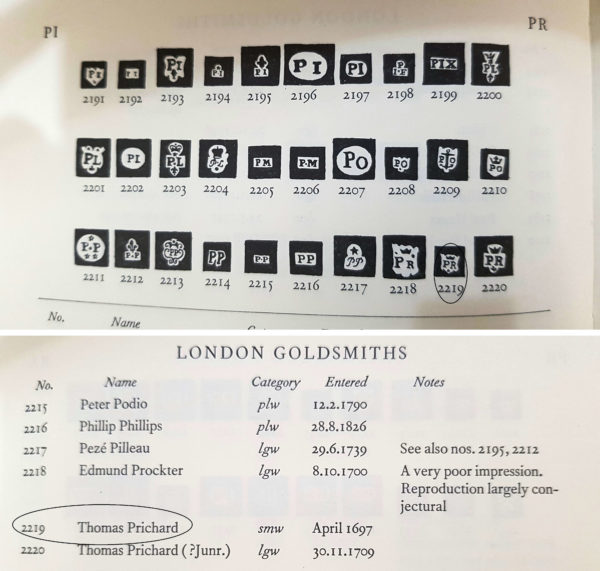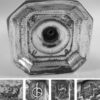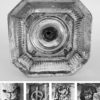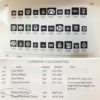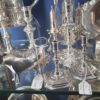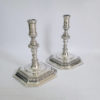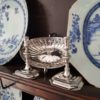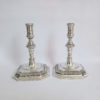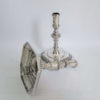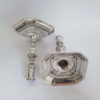Queen Anne Antique Silver Tapersticks
SOLD
Stock: 10278
Date: 1702
Maker: Thomas Prichard
Country: England
A stunning pair of little antique silver tapersticks with square bases and lobed, gadroon decoration. Superb quality. Lovely crisp finish....
Description
Condition
These fantastic little sticks are in very good condition with moderate signs of wear commensurate with age. Excellent patina.
Maker Information
Maker: Thomas Prichard
Thomas Prichard, London silversmith, apprenticed to Charles Laughton of the Grocers’ Company 1687, free 1695. 1st mark as smallworker undated, probably 1697. 2nd mark 1709. Prichard was master of John Edwards II.
Our Guarantee
Customer satisfaction is our primary concern
All silverware on our website is checked thoroughly prior to offering it for sale and every product listing contains a condition report and details of the silver hallmarks.
All items offered on our website include:
- Free Shipping Worldwide
- Tracked and Insured
- 14 day no quibble money back guarantee
- We are accredited members of LAPADA and conform to their strict professional standards
- We dispatch 1-3 days after receiving cleared payments
More detailed information about deliveries, returns and how to pay is available in the Help section at the bottom of this page.
